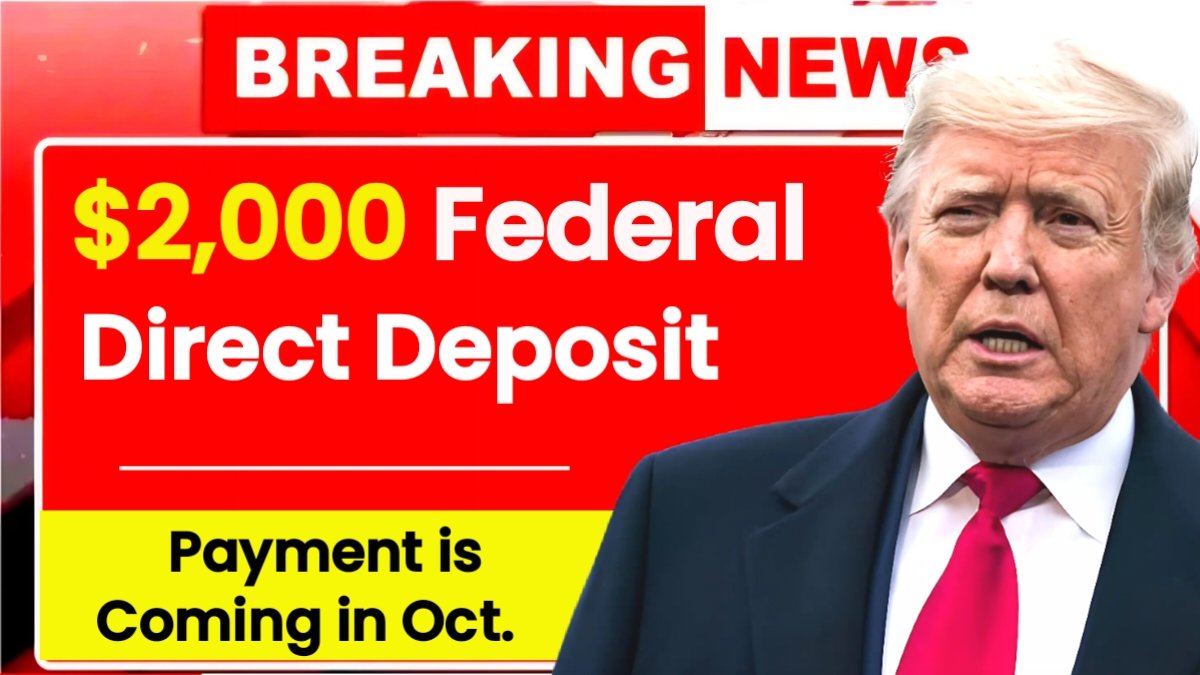Big news out of Washington, D.C.—the federal government is gearing up to send $2,000 direct deposit payments to eligible Americans in October 2025. While many are calling it the “fourth stimulus,” officials have made it clear this is actually part of a broader federal relief initiative aimed at helping families manage high inflation, steep housing costs, and the rising price of everyday essentials.
This one-time payment is expected to make a real impact for working families, retirees, and low-income individuals—especially as the holiday season approaches. For millions, that extra $2,000 could mean catching up on bills, buying groceries, or finally feeling a little breathing room in their monthly budgets.
Why the $2,000 Payment Is Being Issued
Throughout 2025, prices have continued to rise faster than wages. Groceries, rent, and medical costs have pushed many households to their financial limits. To help ease the pressure, the government proposed a one-time $2,000 payment for eligible Americans.
The goal? Short-term relief that helps people pay essential bills, cover daily expenses, and put money back into local economies. Economists say this direct aid could also give small businesses a boost, since most recipients tend to spend their payments on necessities close to home.
Who’s Eligible to Receive It
Eligibility follows a structure similar to previous federal relief programs overseen by the IRS and the U.S. Treasury Department:
- Single taxpayers: Eligible if annual income is up to $75,000.
- Heads of household: Eligible if earning up to $112,500.
- Married couples filing jointly: Eligible with combined income up to $150,000.
Families with dependents—including children, elderly relatives, or disabled adults—may also qualify for partial extra payments. Individuals receiving benefits from Social Security (SSA), Supplemental Security Income (SSI), Veterans Affairs (VA), or the Railroad Retirement Board will automatically be included, with payments deposited directly into their registered accounts.
However, those earning above these income limits, non-resident aliens, or people without a valid Social Security Number will not qualify. Anyone who owes large amounts of back taxes or unpaid child support may see their payment reduced or delayed.
When to Expect the Money
The government plans to distribute the $2,000 payments in three phases throughout October 2025 to keep systems running smoothly:
- October 7–11: First round for taxpayers with direct deposit info on file.
- October 14–18: Second round for SSA, SSI, and VA beneficiaries.
- October 21–25: Final round for those receiving physical paper checks.
Most people should have their payment by the end of October, but the IRS advises everyone to verify their banking and mailing information early to avoid any issues.
How the Payment Will Be Delivered
Just like previous stimulus rounds, the IRS will handle distribution through three secure channels:
- Direct deposit (fastest and safest)
- Mailed paper checks
- Prepaid debit cards for those without bank accounts
People can log into their IRS online account to confirm or update financial details. Direct deposit remains the preferred option for quick delivery.
What You Need to Do
To ensure you get your payment without delays:
- File your 2024 tax return—this determines your eligibility.
- Watch out for scams—the IRS never asks for banking details by phone, text, or email. Official updates appear only on IRS.gov.
- The IRS will relaunch its “Get My Payment” tool so taxpayers can track deposits or mailed checks in real time.
- Non-filers will likely have access to an online registration form to claim their payment.
What This Means for American Families
For millions, this isn’t just another government check—it’s a lifeline. That $2,000 can help families catch up on rent, pay utilities, or restock pantries after months of tightening budgets. Seniors on fixed incomes can use it for medical expenses or prescriptions, while working parents might put it toward child care or transportation.
Beyond household relief, experts say this program could ripple through the economy. When families spend that money locally—at grocery stores, gas stations, or small businesses—it supports jobs and strengthens communities.
Final Thoughts
The $2,000 federal direct deposit marks one of the biggest relief efforts of 2025. With living costs still elevated, it’s a welcome cushion for those trying to rebuild savings and stay financially steady. The government’s aim is simple: offer meaningful help to those who need it most while keeping the economy strong heading into 2026.
To make sure your payment arrives safely, stay alert, keep your IRS info up to date, and rely only on official sources for updates. This relief may be short-term—but for countless American households, it could make all the difference.
